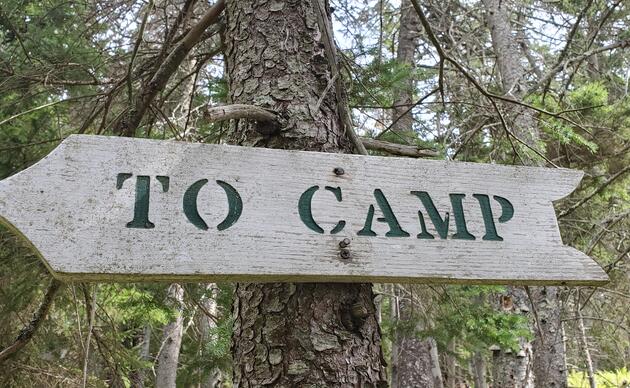Accessibility

Accessibility on Hog Island
Due to the rugged nature of the island historic properties of the building, accessibility can be challenging on Hog Island. We are working to improve the accessibility on Hog Island. We try our best to accommodate anyone who wants to come to camp by offering preferential housing and options for how to engage in different activities. Here is some information that may help you to plan your visit to Hog Island.
Around Camp
While you are at camp, you will be spending most of your time on the main campus which is flat and grassy. Most camp activities will not require much movement, and usually you are able to elect into activities that are more or less strenuous depending on your program.
Rooms
We have first floor and second floor rooms available. Please let us know if stairs are a concern for you. Depending on your upgrade choices, we can likely accommodate you in a first floor room. Some housing is located about 300 yards from the main campus over gently undulating trails with occasional roots or uneven areas.
Accessing the island
You will get to and from the island on a pontoon boat. The boat is accessed by going down a ramp to a floating dock. The ramps can be quite steep at times when the tide is low and the floating docks can be uneven.
Activities
For activities and excursions that leave the main camp area, you will want to be prepared for more taxing terrain. Here are some common activities that take place at camp and what you can expect as far as terrain and exertion are concerned. Please note, not every program does all these activities!
- Hiking on Hog Island Trails – We have well maintained hiking trails all over Hog Island. These trails are easy to follow and range in length. The terrain is rocky and ‘rooty’, and can oftentimes be wet and muddy depending on the weather. It is more challenging to traverse than the terrain on the main campus. We have trail maps available at camp that describe the mileage of the different routes. If hiking is a part of your program, you are typically given the option between the long hike (~5 miles) that goes around the entire perimeter of the island and the short hike (~3 miles) which cuts straight across the middle. Sturdy shoes with ankle support and hiking poles can be very helpful for traversing the island.
- Intertidal Exploration – Tide pooling involves walking over slippery and uneven rocks and sometimes through the water in search of marine invertebrates. There is always the option to stay on the beach without venturing out on the rocks. This way, you can still see the organisms that are being collected.
- Boat Trip to Eastern Egg Rock – The boat has bench seating for participants. It is partially covered and there is an option to be in the shade. For the most part you can be quite exposed and hats, sunscreen, and layers are highly recommended. If motion sickness is a concern let us know and we can offer you some options for medication and other prevention methods.
- Landing and Hiking on Harbor Island – After we go out to Eastern Egg Rock to look for puffins, we often stop at Harbor Island for lunch and exploring the island. To get onto the island, you will be shuttled from the boat in a small dory. Getting into and out of the dory involves stepping over the high sides. We will provide a stepping stool to help you get in and out, and instructors will also offer physical assistance as needed. Once you are on Harbor Island, you will have some different options. One option is staying on the big, calm, sandy beach where we land in the dory. Another option is hiking on Harbor Island, which has very similar terrain to Hog Island. There is limited access to shade on Harbor Island.



